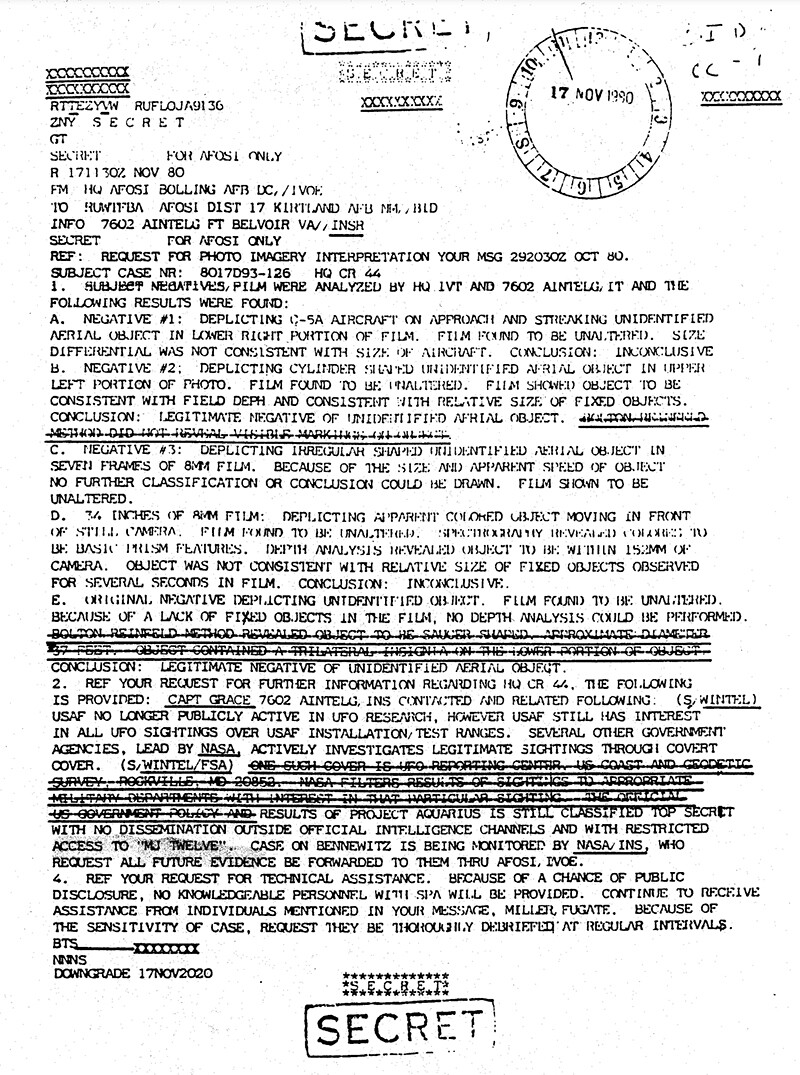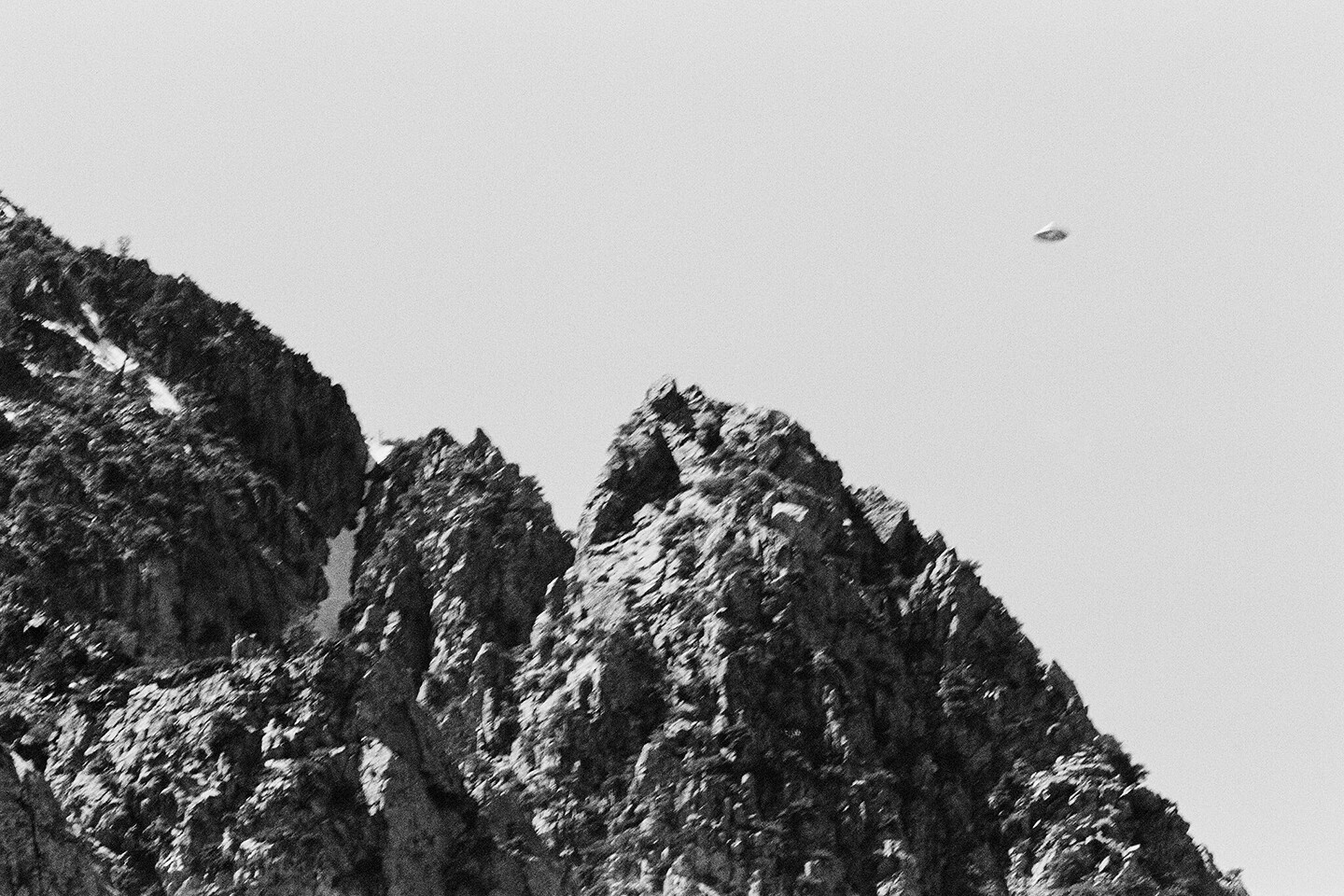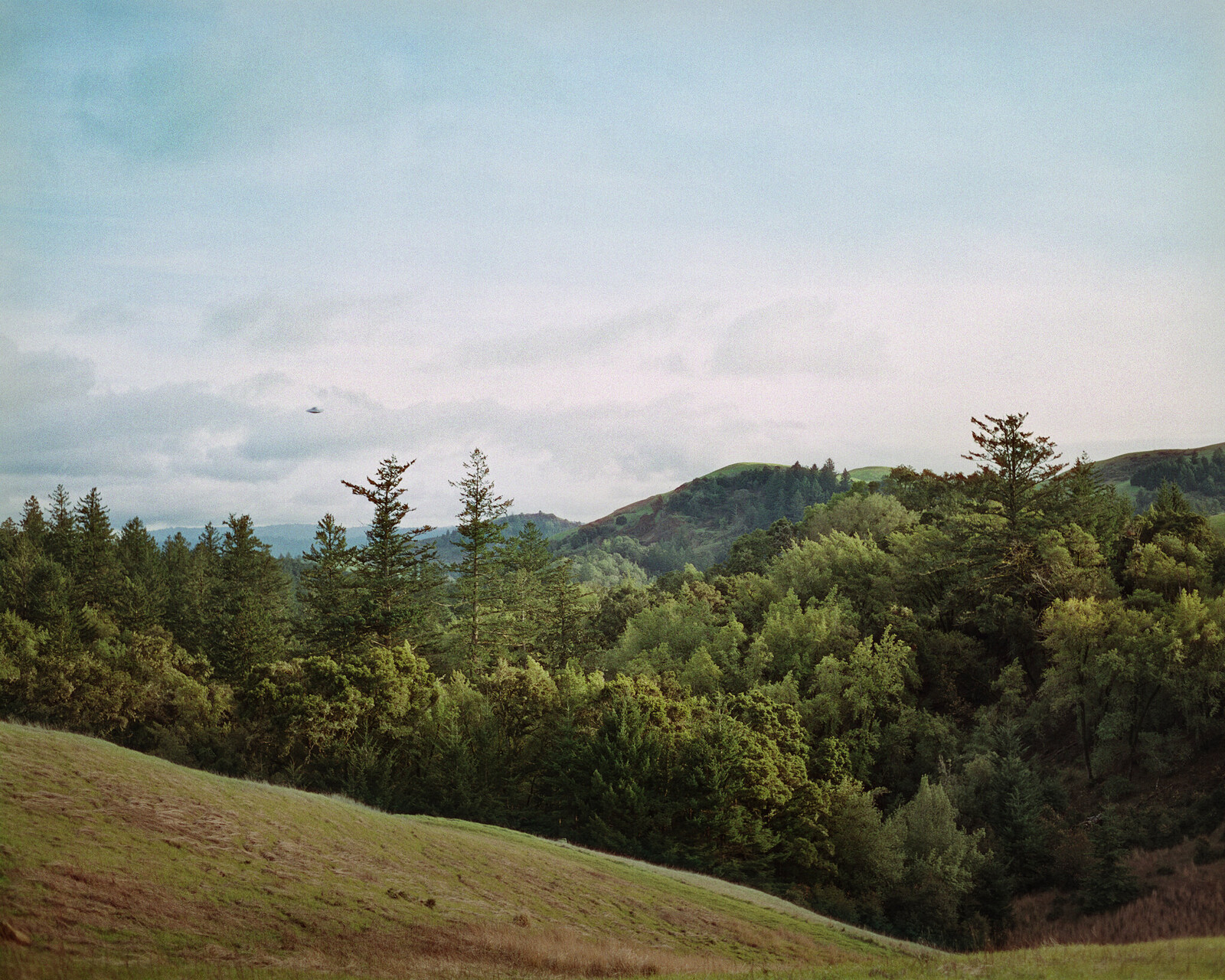We once looked at pictures. Then, with the advent of computer vision and machine learning, pictures started looking back at us. Now, something even stranger is happening.
Generative AI, Adtech, recommendation algorithms, engagement economies, personalized search, and machine learning are inaugurating a new relationship between humans and media. Pictures are now looking at us looking at them, eliciting feedback and evolving. We’ve entered a protean, targeted visual culture that shows us what it believes we want to see, measures our reactions, then morphs itself to optimize for the reactions and actions it wants. New forms of media prod and persuade, modulate and manipulate, shaping worldviews and actions to induce us into believing what they want us to believe, and to extract value and exert influence.
What does it mean to live in a media environment that knows our wants, needs, vulnerabilities, emotional ticks, kinks, and cognitive quirks far better than we do? That notices which kinds of stimulus induce what kinds of precognitive responses, and uses machine learning to develop, A/B test, and deploy custom-generated cognitive injections designed to manipulate us even further, all without us consciously perceiving what’s happening? And what does it mean to live in a media environment where this is all-pervasive: not only news and websites, videos and movies, but driving assistants in cars, AI-generated customer service representatives, search engines and chatbots, virtual HR managers, gas-station pumps, smart houses and phones, and even washing machines … a media landscape where your refrigerator, vibrator, and toothbrush collude with insurance companies, advertisers, political campaigns, and big retailers, using computer vision, machine learning, and biometric feedback to influence your behavior and worldview?
Every day, we are subject to subtle and not-so-subtle mind-control experiments. Through nearly imperceptible experiments and machine learning–enabled analysis, coupled with various types of sensors (from simple “like” buttons and engagement metrics to cameras and other sensors designed to measure preconscious responses), the media we interact with seeks to develop a sense of—and make alterations to—each of our own unique neurological makeups.
If the postwar media landscape was characterized by spectacle, and the late twentieth and early twenty-first century by an age of surveillance, then we are entering a new phase. One marked by affective computing, machine learning–enabled optimization, neuroscience, and cognitive psychology. A mediascape that has little use for distinctions between real and fake, signifier and signified. That assumes no distinction between perception and reality even as it attempts to intervene as directly as possible into the brains and emotional makeups of its experiencers.
Society of the psyop.1


US Army Challenge Coin (collection of author).
How did we get here? This three-part essay traces a brief history of media, technologies, and techniques that take advantage of the malleability of perception, capitalizing on quirks in human brains to shape reality. It is a story about the manufacturing of hallucinations and the fact that, under the right conditions, hallucination and reality can become one and the same.
Doty
I first met Richard Doty in 2022. I was anxious. I could feel my unease rising as his silver SUV pulled into the parking lot across from the makeshift film studio where I was working at the University of New Mexico.2 A paunchy man wearing a red polo shirt emerged. I wasn’t afraid of physical violence. Rick Doty wasn’t known for that. I was worried about my own sanity. Doty was known for that.3
Doty conducted elaborate psyop programs for the US Air Force in the 1970s and ’80s. One of his targets, a defense contractor, was so consumed by paranoia after being subjected to Doty’s craft that he was committed to a mental institution. There was also a well-respected journalist who, after enduring one of Doty’s psychological operations, spent the remainder of her career babbling about reptoids, cover-ups, and ancient alien conspiracies. A third target, a former UFO investigator who collaborated with Doty, publicly confessed to participating in a military disinformation campaign and retreated into self-imposed obscurity. We would be spending the next two days together. It turned out that I liked the guy.
I had sought out Doty because I wanted to learn about the particular form of media-making he practiced to such dramatic effect. My intuition was that Doty’s career as a cultural producer could shed some light on what media might be like in an age of recommendation algorithms, personalized news feeds, information bubbles, and generative AI.
For the next two days, Doty explained the finer points of military interrogations and influence operations, the theory and practice of psyops, and how he’d created and used folklore about UFOs to develop counterespionage missions designed to protect classified Air Force assets. But in Doty’s retelling of the work he did on behalf of the US military, there was a strange inversion. Yes, he created misinformation about UFOs to conceal the existence of secret US military projects. But he also described creating false stories about classified Air Force technologies to cover up the existence of actual UFOs (internally known as “Cardinals,” he claims). Upon retirement from the US Air Force, Doty became a self-styled whistleblower, recounting details of the real UFO program he claims to have had a hand in covering up. He told stories of a secret film documenting the existence of crashed saucers, a classified warehouse at Bolling Air Force Base containing the remnants of those UFOs, and the cultural life of captured pilots from the Zeta Reticulli star system.
Doty began working for the Air Force Office of Special Investigations (AFOSI) in the late 1970s. AFOSI is an outfit analogous to an in-house FBI, charged with investigating criminal activity in the military and conducting counterintelligence work to ensure the security of military installations and assets. After completing his training in the Washington, DC area, Doty was assigned to Kirtland Air Force Base in Albuquerque, New Mexico.
Kirtland is a massive base encompassing over fifty thousand acres, extending from a collection of runways and hangars adjacent to the Albuquerque airport to vast tracts of land to the east and south. Its neighbors are a veritable who’s-who of conspiracy theories and UFO lore. Nestled among the mountains ninety miles to the north is Los Alamos National labs, where World War II–era scientists worked in secret to develop the world’s first atomic bomb. To the south is the Trinity Site, where that atomic bomb was first detonated, turning the desert surface into a radioactive glass called “trinitite.” Still further south is the White Sands Missile Range, where US forces transported Nazi rocket scientists in the aftermath of World War II as part of Operation Paperclip. The alleged Roswell UFO crash site is a two-hour drive southeast.
In the late 1970s, Kirtland Air Force Base’s acknowledged tenants included the Air Force Weapons Laboratory, charged with research and development on advanced weapons systems, directed-energy weapons, and the effects of nuclear fallout. Another outfit, Sandia National Labs, designed and tested components for nuclear weapons. Such weapons were stored and managed in a facility in a restricted section in the eastern part of the base. Kirtland also played host to a handful of unacknowledged tenants, including a detachment from the National Security Agency (NSA).
When Doty arrived in 1979, Kirtland was synonymous with top-secret military technology experiments. In 1973, base engineers had succeeded in using a ground-based laser to shoot down an airplane, and were busy developing a directed-energy weapon that could be fired from an airborne platform. Elsewhere on the base, the Air Force trained Special Forces units, conducted advanced helicopter training, and tested experimental weapons systems. Doty’s job was to keep all of this secret.
In the late 1970s, a military contractor named Paul Bennewitz, who lived on Kirtland’s northern border, started seeing and photographing unusual lights and movements over the restricted range adjacent to his house. He came to the conclusion that they must be UFOs. An avid electronics enthusiast, Bennewitz made recordings of bizarre radio emissions he believed to be coming from the objects. Bennewitz offered to help the military repel what he believed to be an extraterritorial harassment campaign: he collected his evidence, sent it to the AFOSI team, and in the fall of 1980 was invited to present his findings.
Evidently, it wasn’t an alien invasion that Bennewitz had discovered, but a top-secret NSA program. The case landed on Rick Doty’s desk.4
Doty took a creative approach to the problem: rather than “neither confirm nor deny” the existence of UFOs or secret intelligence programs at the base, he staged an elaborate deception and cover-up operation to encourage Bennewitz’s imagination. A source he’d recently recruited from the UFO research community would be a huge help.
In the summer of 1980, Doty made a pitch to this source, named William Moore, who was the coauthor (with Charles Berlitz) of the 1980 book The Roswell Incident. Doty’s proposal was this: Doty would provide Moore with incontrovertible proof of extraterrestrial contact in exchange for Moore’s help in conducting AFOSI investigations and reporting on the activities of amateur UFO groups. The deal was irresistible, and Moore cooperated.
Doty began using Moore as a proxy. Doty gave Moore doctored top-secret documents to pass along to Bennewitz, alluding to government knowledge of an extraterrestrial presence on earth. Furthermore, the documents implied that Bennewitz’s discoveries were relevant to an above-top-secret program called “Aquarius,” administered by a shadowy group called “MJ Twelve.”


Facsimile of document given to Bennewitz.
(S/WINTEL) USAF no longer publicly active in UFO research, however USAF still has interest in all UFO sightings over USAF installation/test ranges. Several other government agencies, led by NASA, actively investigates [sic] legitimate sightings through covert cover. (S/WINTEL/FSA) One such cover is UFO Reporting Center, US Coast and Geodetic Survey, Rockville, MD 20852. NASA filters results of sightings to appropriate military departments with interest in that particular sighting. The official US Government Policy and results of Project Aquarius is still classified top secret with no dissemination outside official intelligence channels and with restricted access to ‘MJ Twelve’. Case on Bennewitz is being monitored by NASA, INS, who request all future evidence be forwarded to them through AFOSI, IVOE.’
The operation against Bennewitz snowballed: according to William Moore, in the summer of 1981, AFOSI arranged for Bennewitz to receive a computer he could use to decipher the “alien” signals. The doctored computer spat out long streams of quasi-nonsensical text as if it were a chatbot in a trance or fugue state:
WE CANNOT TELL MILITARY OF THE US MAKING HUMANOIDS REASON FOR HATE IS YOU ARE GOOD—WE TRUST YOU TAKE VAST PORTION UNIVERSE AGAINST OUR AGGRESSION THE NUMBER OF OUR CRASHED SAUCERS IS EIGHT NERVE YOU WE REALIZE TELL THE TRUTH
Then the operation against Bennewitz became more elaborate. Knowing that Bennewitz was an avid amateur pilot and that he suspected the existence of a top-secret alien captive near the town of Dulce, New Mexico, AFOSI installed surplus military equipment on the top of Archuleta Mesa so that Bennewitz would see it on one of his flyovers and be convinced of the existence of the secret base. The Air Force was crafting an alternate reality to feed Bennewitz’s predilections and ensure that he believed what they wanted him to believe.
With the Bennewitz project underway, Doty began a second operation. Linda Moulton Howe was an award-winning television journalist who’d recently completed A Strange Harvest, a documentary on the “cattle mutilation” phenomena. In the wake of that success, Howe received a contract from HBO to make a second documentary on the topic of UFOs. Doty got in touch with Howe and invited her to Kirtland Air Force Base for a briefing. At the AFOSI offices, Doty explained that Howe was onto something big and that AFOSI was prepared to help. He then pulled out a dossier and instructed Howe that its contents were for her eyes only: she could read the documents but take no pictures. Other AFOSI officers observed her reaction from behind a one-way mirror.
Doty presented Howe with a dossier entitled “Briefing Paper for the President of the United States.” The documents therein told a remarkable story of an ongoing extraterrestrial presence on earth, UFO crashes at Roswell and other locations, and a surviving alien being held at Los Alamos. Moreover, the US government had reason to believe that aliens had genetically intervened in the human race and guided our development using various techniques, such as the creation of a great spiritual leader approximately two thousand years ago. Echoing the documents fed to Bennewitz, the dossier reiterated that the “MJ Twelve” group was responsible for the UFO and extraterrestrial program.
Doty explained to Howe that this was only the beginning. In return for Howe’s coordination with AFOSI on her documentary, he promised footage from a top-secret film documenting an apocryphal 1964 UFO landing at Holloman Air Force Base in southern New Mexico, and offered her access to an Air Force colonel who had allegedly handled one of the surviving aliens from the Roswell crash. Howe was thrilled. Weeks passed. Then months. No footage arrived, no interviews materialized. HBO killed the project. Howe’s documentary on the UFO phenomenon was not going to happen.
The 1988 edition of the US Army Field Manual outlines ten principles of military deception. The “Monkey’s Paw” principle states that the number of people with knowledge of a particular deception operation should be minimized, even if it means misleading one’s own forces. “Jones’s Dilemma” holds that deception becomes more difficult as the number of information channels available to the target increases, with the caveat that the greater number of controlled channels the target has access to, the more likely the deception will be successful. “Cry Wolf” holds that repeated mis-predictions of an event will desensitize the target to warnings of it. (This principle cites intelligence failures around the US Tet Offensive in Vietnam, which arose from repeated warnings that did not bear out.) Other principles involve the correct design and sequencing of misinformation, the importance of holding materials in reserve, and attention to the limits of human information processing.5
Doty’s operation chiefly used a combination of three other principles: “Magruder’s Principle—The Exploitation of Perceptions,” the “Choice of Types of Deception” maxim, and “The Importance of Feedback.” Both the field manual and Doty himself agree that the most important of these principles is “Magruder’s Principle—The Exploitation of Perceptions.” Named after the Confederate general John B. Magruder, it holds that “it is generally easier to induce the deception target to maintain a pre-existing belief than to deceive the deception target for the purpose of changing that belief.” In this case, the preexisting belief that Doty capitalized upon was the existence of extraterrestrials and a government cover-up of that knowledge.
The “Choice of Types of Deception” maxim holds that the “deception planner should … reduce the uncertainty in the mind of the target” and should “force him to seize upon a notional world view as being correct—not making him less certain of the truth, but more certain of a particular falsehood” (emphasis in original). To achieve this deception, Doty chose media tailored to each of his targets: for Bennewitz the engineer and pilot, he provided an advanced computer and a Potemkin base on a remote mesa; to Howe the journalist, he supplied false top-secret official documents and the promise of on-the-record sources with knowledge of the alien conspiracy.
Finally, the field manual emphasizes “The Importance of Feedback,” the significance of which is “virtually self-evident.” Feedback answers the question “Is anybody listening? (Is this channel effective?)” This is where William Moore, author of The Roswell Incident, came in. Moore was both a means of distribution and a feedback mechanism, a sensor that could judge the responses these particular media elicited. Doty could then gauge the reactions, amplify the signal that elicited the strongest feedback, and send back the amplified signal.


Trevor Paglen, Near Kidney Lake (undated), 2024.
The outcome was a path to insanity. Paul Bennewitz became ever more paranoid about alien surveillance, accusing his wife of being controlled by aliens and eventually barricading himself in his house. In August 1988 he would be hospitalized for a mental breakdown. The next summer, William Moore publicly confessed to participating in a disinformation campaign against Bennewitz and colluding with the US government to betray the UFO community. He faded into obscurity soon after. For her part, Linda Moulton Howe doubled down on her project to seek “the truth” about extraterrestrials. To this day, she claims that there are 168 advanced civilizations in the Milky Way, that multiple species of extraterrestrials inhabit earth and can manipulate time, that there exists an alien presence under the ice sheets of Antarctica, that crop circles and cattle mutilations have something to do with it, and that a vast government conspiracy is covering it all up.
The information Doty fed to these three people gave life to what’s known in UFO circles as the “darkside hypothesis.” The story he told made its way through the UFO subculture and popped out into the mainstream as the plot of the television show The X-Files.
At this point, we might ask a simple question: Why? Was the top-secret NSA program at Kirtland so sensitive as to warrant the incredible resources spent to steer Bennewitz into a reality populated by aliens? Did Linda Moulton Howe’s reporting actually come close to something so important that the AFOSI had to derail her by producing a vast and detailed otherworldly conspiracy? And why bother recruiting William Moore, a prominent figure in the UFO community with only a marginal influence on the broader culture? And why use UFOs? There are no good answers to most of these questions, but we have a better answer for why UFOs became Doty’s primary mimetic device.
It turns out that US military and intelligence agencies have a long history of using UFOs as a psychological instrument, having discovered their hyper-mimetic qualities in the 1950s. Decades before Doty’s variations on the theme, UFOs were a well-known self-replicating cultural trope capable of infecting individual and cultural consciousness and spreading like a virus.
The discovery of the UFO hyper-meme took place in the 1950s, against the backdrop of a massive effort by US military and intelligence agencies to develop ways to manipulate people’s minds. It was an era of CIA mind-control experiments, covert operations inspired by magic and illusionism, and extensive research into using computers, artificial intelligence, and electronic warfare to shape the experience of reality, and therefore reality itself.
Continued in “The Society of the Psyop, Part 2: AI, Mind Control, and Magic”
I’d like to acknowledge the concept of “psyop realism” developed separately by artists Jak Ritger and Brandon Bandy and journalist Günseli Yalcinkaya. Echoing Mark Fisher’s term “capitalist realism,” “psyop realism” describes the aesthetic experience of inhabiting a post-irony online landscape that Ritger characterizes as “a lack of meaning or possible revolutionary action during climate collapse and the condition of growing up in the most heavily policed and advert-saturated online experience yet,” at a time of “intense suspicion and conspiracism, where the term ‘false flag’ is used widely.” See Jak Ritger, “Because Physical Wounds Heal,” Punctr.Art, February 7, 2024 →; Günseli Yalcinkaya, “We’re Entering an Age of ‘Psyop Realism,’ But What Does That Mean?,” Dazed, January 26, 2023 →; and Brandon Bandy, “Psyop Realism,” exhibition, Phyllis Gill Gallery, University of California Riverside, November 14–17, 2022 →.
I want to thank Stewart Copeland, director of the ARTs lab at the University of New Mexico, Jessica Metz, Daniel Neves, and the Department of Art at UNM for making this project possible.
I’m deeply indebted to Mark Pilkington both personally and professionally for his guidance and inspiration. His book Mirage Men is the definitive account of the use of UFOs by military and intelligence agencies to conduct psychological operations. See Mark Pilkington, Mirage Men: An Adventure into Paranoia, Espionage, Psychological Warfare, and UFOs (Orion Books, 2010).
The Bennewitz story is most comprehensively documented in Greg Bishop, Project Beta: The Story of the First US Space Contact (Paraview Press, 2005).
Army Field Manual, FM 3-13.4, “Army Support to Military Deception,” Department of the Army, February 2019; also Army Field Manual FM 90-2, “Battlefield Deception,” Department of the Army, October 3, 1988.


